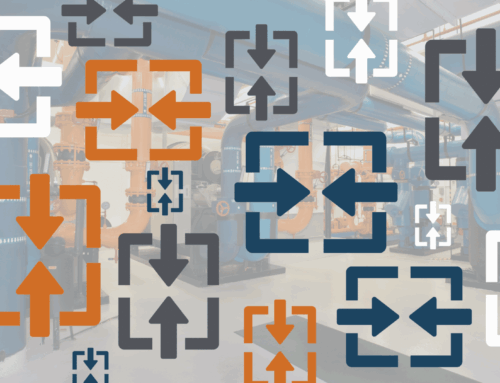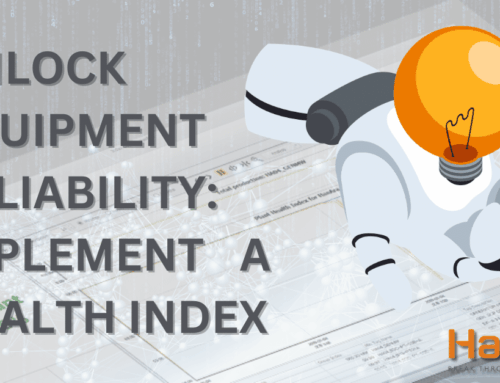As we move together through this Digital Transformation journey, it’s important to remember the key steps to achieving success along the way. Let’s dive into:
- The history of Digital Transformation,
- The path the manufacturing industry has taken, and
- The need for a data infrastructure to achieve operational excellence.
The process of intentionally bringing about comprehensive changes, after due deliberation, by leveraging emerging digital technologies so as to achieve overarching objectives—which, in the business context, often includes improving a company’s business and production processes, enhancing customer and shareholder value, becoming more efficient and productive, and such other goals.
History of Digital Transformation
Digital Transformation is a modern movement and has been a popular topic in many sectors since the mid-1900s with the start of the Digital Revolution. Also known as the third industrial revolution, this period marked a change from mechanical and analog technology to digital electronic technology made possible through the mass production of logics and chips.
Building on these advancements in the last century, we have transitioned into the Fourth Industrial Revolution (Industry 4.0). Unlike previous industrial revolutions, according to Klaus Schwab (Founder and Executive Chairman of the World Economic Forum), Industry 4.0 is “characterized by a range of new technologies that are fusing the physical, digital and biological worlds, impacting all disciplines, economies, and industries.” So, Industry 4.0 and Digital Transformation are no secret to any industry. And as time goes on with more discoveries and advancements, technology will only continue to change our way of life, personally and professionally.
Even though the concept has been around since the 20th century, we are still in the early stages of digital transformation. According to Gartner, digital transformation “is widely used in public-sector organizations to refer to modest initiatives such as putting services online or legacy modernization.” There is still room for growth and improvement. This potential is one that all areas of a business can take advantage of and be successful. All levels of an organization should seriously consider how digital transformation can support their day-to-day life.
Industrial Digital Transformation in Manufacturing
Industrial digital transformation represents a new growth engine for manufacturing companies. Manufacturers are faced with growing challenges. This includes the prolonged economic downturn, rapidly changing market demands, and limited resources (budget, time, and people). They are using technology to overcome and combat these difficulties. The manufacturing industry increases production efficiency, saves resources and energy, and enhances competitiveness by responding to changing market demands and expanding its digital transformation strategies.
In a report by Deloitte and Manufacturer’s Alliance for Productivity and Innovation, manufacturing organizations that implemented smart factories experienced “on average 10–12 percent gains in areas such as manufacturing output, factory utilization, and labor productivity.” With these proven gains, it is no surprise that the creation of smart factories is rapidly increasing. For example, it is estimated that approximately 7,000 companies in 2020 started their transformation to smart factories.
One effective strategy manufacturing organizations implement as a part of their digital transformation is the creation of centralized monitoring and diagnostic (CMD) centers and remote and integrated control centers. They provide a clearer view of current operations across the fleet. And it enables subject-matter experts (SMEs) to focus on areas of high priority throughout the fleet. For example, a large manufacturing organization built an integrated control center. The center is capable of real-time integrated monitoring of all its facilities and equipment data. This implementation helped to minimize losses and optimize production by taking data-informed actions from the warehousing of raw materials to product shipment.
An additional effective strategy taken by the manufacturing industry is to ensure information and documentation are available when needed. Whether on the floor, in the office, or at home. Security measures are required to be in place to control access, ensure data, and process security. Manufacturing organizations have found success in balancing security with access requirements. An example of this comes from an electronics manufacturer creating a Bring Your Own Device (BYOD) system. Access to models, drawings, and data on smartphones and tablets leads to the manufacturing sites seeing significant productivity increases.
The Importance of Data Infrastructure for Industrial Digital Transformation
The beginning of plant digitalization starts with the establishment of a data infrastructure. Improved plant operation and cost reduction are possible based on how organizations analyze and use their data in day-to-day operations and decision-making. Experts believe the way in which organizations use their data will widen the gap in corporate competitiveness. So, laying the groundwork for data utilization and management is a crucial first step in digital transformation.
In the manufacturing space (and process and discrete industry in general), the foundation of a data infrastructure is a data historian. A data historian collects, archives, and visualizes equipment data from across the site and fleet in a central location. This data platform not only keeps the historical record of past operations. It also enables organizations to have a clear view of the current operating status and areas for improvement.
If the amount of data available is insufficient in the data historian, an organization should start by initiating a strategy to increase the amount of data generated from sensors. This initiative may require adding additional sensors or ensuring the sensors send data to a central location. Connecting equipment measurement data (temperature, flow rate, pressure) and management data (production targets, quality indicators) into one data infrastructure help organizations improve operational insights and secure flexible and quick responses.
Next Steps
Regardless of what stage you are on in your digital transformation journey, it is important to clearly identify and articulate your goals. Establish step-by-step management and operational goals. Define KPIs that quantify goal performance. And then utilize the established infrastructure to move towards achieving the goals.
And remember, you don’t have to do this alone. Partner with solution providers like HanAra to help improve and enhance your digital transformation. Our proven solutions have helped organizations transform their plants into smart plants. Our data historian collects, analyzes, and displays your data in a convenient and visually intuitive way. And our other solutions provide predictive analytics, control and monitoring, and business intelligence to help achieve operational excellence.






